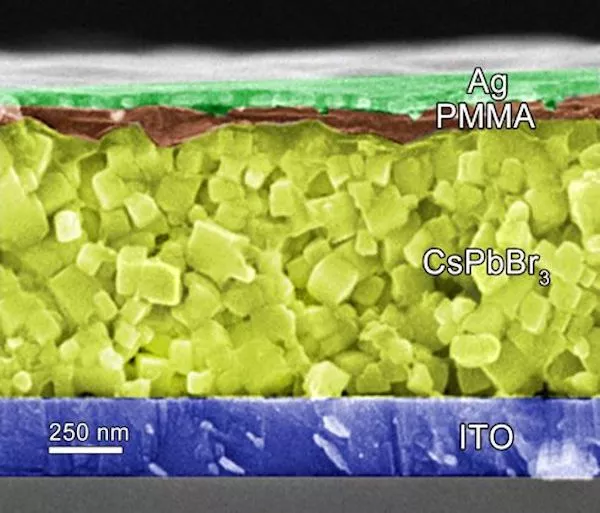While the data on most memory devices can be read using electric signals, an emerging technology encodes data in light, so a system can read it back just by checking if an LED is on or off. Now, researchers have developed a new device based entirely on perovskite that can do both at once.
Digital data is stored in bits, as either a one or a zero, but exactly how those states are represented can vary between technologies. In flash memory, it’s stored as electric charge in transistors, while the emerging resistive RAM (RRAM) devices store and read data as changes in electrical conductivity. But they have their own issues, so the researchers on the new study combined RRAM with another technology.
"... the electrical measurements needed to check the resistance and read zeros and ones from RRAM can limit the overall speed," says Chun-Chieh Chang, co-corresponding author of the study. "Recently, to overcome this issue, RRAMs have been combined with LEDs to develop something called light-emitting memories (LEM). In this case, the data can also be read by checking if the LED is on or off. This additional optical reading also opens new routes for carrying large amounts of information."
Previously these hybrid devices have involved combining two different systems together, which can complicate the manufacturing. So for the new study, researchers at Kyushu University and National Taiwan Normal University set out to make a simpler version using just one material.
Perovskite fit the bill. This crystalline mineral has impressive electrical and optical properties, and has increasingly been used in solar cells and other energy-generation devices. The team created a memory storage device that can operate as an RRAM and an LEM at the same time, using just perovskite.

In this case, the perovskite is made up of cesium lead bromide (CsPbBr3), and it’s divided into two different sections. One of them acts as the RRAM, with data written and read using electricity, while the second section transmits pulses of light that indicate whether data is being written or erased through different colors, either green or aqua.
"This demonstration significantly broadens the scope of applications of the developed all-perovskite light-emitting memory and can serve as a new paradigm of synergistic combination between electronic and photonic degrees of freedom in perovskite materials," says Kaoru Tamada, co-corresponding author of the study. "From multicast mesh network to data encryption systems, these findings have the potential for numerous applications in next-generation technologies."
The research was published in the journal Nature Communications.
Source: Kyushu University




